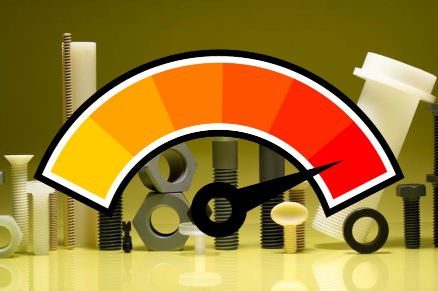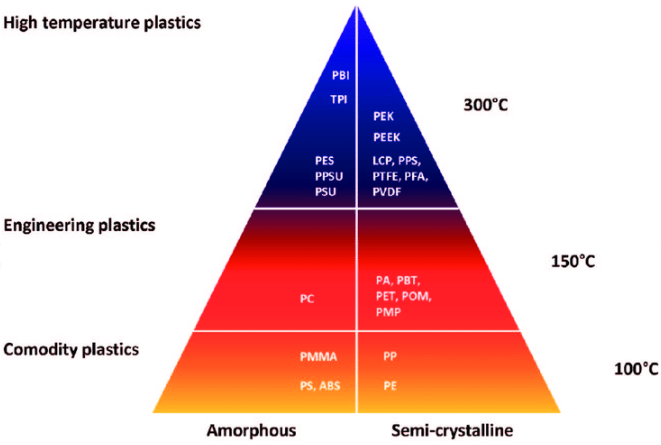Plastics are utilized across practically every market because of their convenience of manufacture, inexpensive, and wide range of buildings. Over and above typical commodity plastics there exists a class of sophisticated heat immune plastics that can hold up against temperature levels that can not. These plastics are made use of in sophisticated applications where a mix of warm resistance, mechanical strength, and harsh resistance are essential. This post will clarify what heat-resistant plastics are and why they are so advantageous.
What is Warmth Resistant Plastic?
A warmth resistant plastic is typically any type of plastic that has a continuous-use temperature level of above 150 ° C( 302 ° F )or a temporary direct exposure resistance of 250 ° C( 482 ° F) or extra. In other words, the product can sustain procedures at over 150 ° C and can endure brief stints at or above 250 ° C. Along with their warmth resistance, these plastics usually have phenomenal mechanical homes that can often also match those of metals. Heat resistant plastics can take the form of thermoplastics, thermosets, or photopolymers.
Plastics are comprised of long molecular chains. When heated up, the bonds between these chains are damaged, creating the product to thaw. Plastics with reduced melting temperatures are usually comprised of aliphatic rings whereas high-temperature plastics are made up of fragrant rings. In the case of fragrant rings, two chemical bonds require to be damaged (compared to aliphatic rings’ solitary bond) before the framework breaks down. Thus, it is tougher to melt these products.
In addition to the underlying chemistry, the warmth resistance of plastics can be boosted utilizing ingredients. Among the most usual additives for enhancing temperature level resistance is glass fiber. The fibers also have actually the added benefit of increasing total tightness and material stamina.
There are various techniques of identifying a plastic’s heat resistance. The most substantial are listed here:
- Heat Deflection Temperature Level (HDT) – This is the temperature at which plastic will flaw under a predefined lots. This measure does not account for the prospective long-term effects on the product if that temperature is held for extended time periods.
- Glass Change Temperature (Tg) – In the case of an amorphous plastic, the Tg describes the temperature at which the material transforms rubbery or viscous.
- Continuous Use Temperature (CUT) – Specifies the optimum temperature at which plastic can be constantly utilized without substantial destruction to its mechanical homes over the part’s design life time.
Why make use of Heat Resistant Plastics?
Plastics are widely used. However, why would a person use plastics for high-temperature applications when steels can often execute the same features over much broader temperature varieties? Right here are some reasons that:
- Lower Weight – Plastics are lighter than metals. They’re hence excellent for applications in the vehicle and aerospace markets that rely on lightweight elements to enhance general effectiveness.
- Rust Resistance – Some plastics have much better rust resistance than steels when revealed to a wide variety of chemicals. This can be essential for applications that involve both heats and harsh atmospheres like those located in the chemical industry.
- Manufacturing Flexibility – Plastic components can be made making use of high-volume production technologies like injection molding. This results in parts that are less costly per unit than their CNC-milled metal counterparts. Plastic parts can also be made making use of 3D printing which enables complex layouts and better design flexibility than could be achieved making use of CNC machining.
- Insulator – Plastics can act both as thermal and electrical insulators. This makes them ideal where electrical conductivity might damage sensitive electronic devices or where heats can negatively affect the components’ procedure.
Sorts Of High-Temperature Resistant Plastics
There are 2 main teams of thermoplastics– namely amorphous and semicrystalline plastics. Heat-resistant plastics can be discovered in each of these groups as shown in Number 1 listed below. The primary difference between these 2 is their melting actions. An amorphous product does not have a precise melting point however rather slowly softens as the temperature level rises. A semi-crystalline material, by comparison, has an extremely sharp melting point.
Listed below are some products on offer from DTG. Call a DTG agent if you need a details product that is not noted here.
Polyetherimide (PEI).
This material is commonly understood by its trade name of Ultem and is an amorphous plastic with exceptional thermal and mechanical buildings. It is also flame resistant even without any ingredients. However, particular flame resistance need to be checked on the product’s datasheet. DTG supplies two qualities of Ultem plastics for 3D printing.
Polyamide (PA).
Polyamide, which is additionally recognized by the trade name, Nylon, has superb warm resistant homes, especially when integrated with ingredients and filler materials. In addition to this, Nylon is extremely resistant to abrasion. DTG provides a variety of temperature-resistant nylons with many different filler materials as shown listed below.
Photopolymers.
Photopolymers are distinct plastics that come to be polymerized only under the impacts of an outside energy resource like UV light or a particular optic mechanism. These materials can be made use of to produce top quality published parts with intricate geometries that aren’t possible with various other manufacturing innovations. Within the category of photopolymers, DTG offers 2 heat-resistant plastics.
Post time: Aug-28-2024




